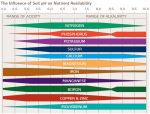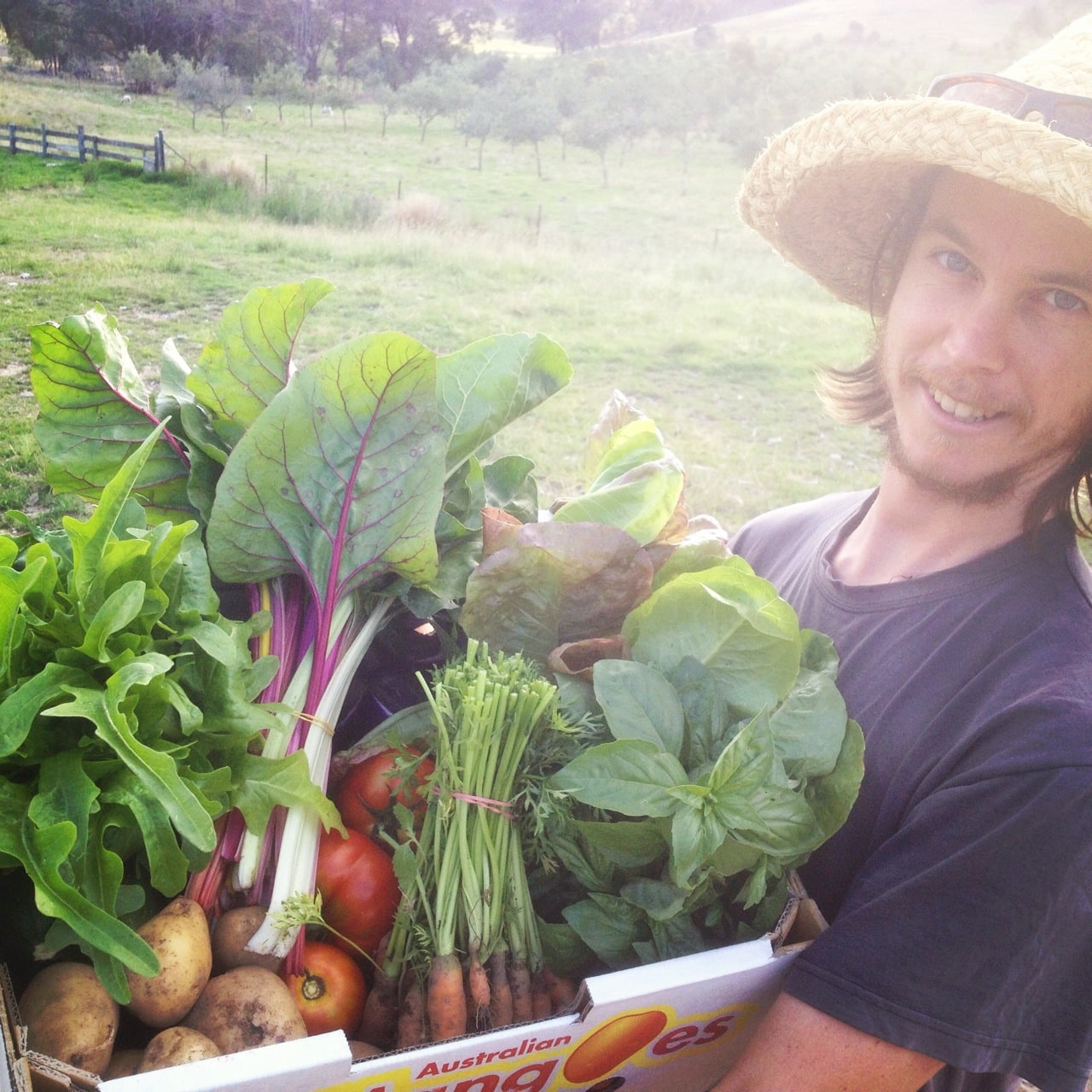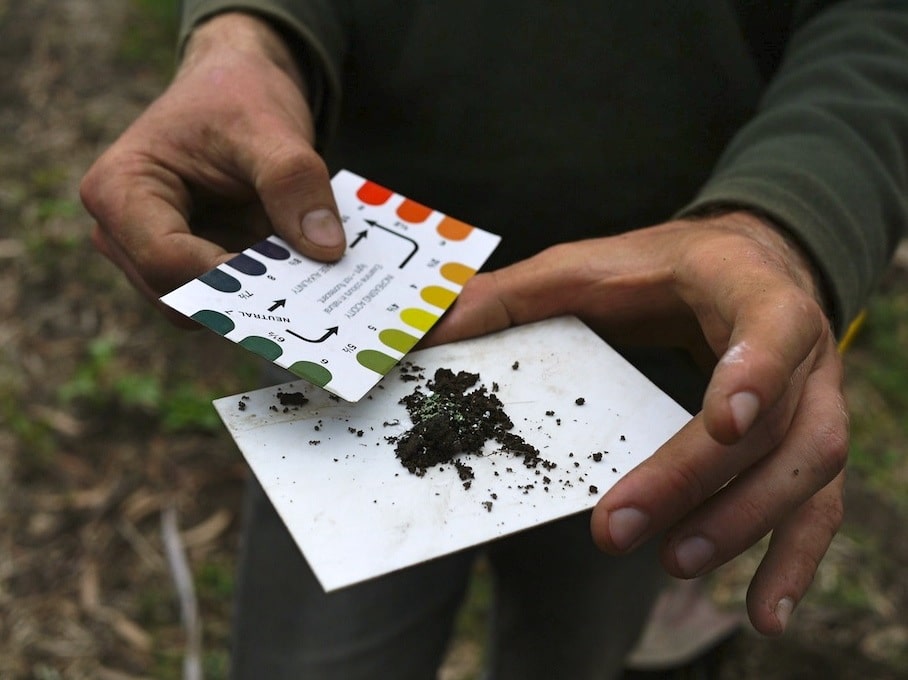ROCK DUST CAN IMPROVE OUR SOILS
By Alanna Moore
From the June 2005 issue of Acres U.S.A. magazine
Rock dust is a byproduct of the quarrying industry and results from rock crushing. In the industry it is known as blue metal, cracker or crusher dust.
Landscapers use rock dust for filling holes, bedding paving stones and mixing with cement. More recently its applications have broadened to other areas and its true importance is becoming apparent.
Over 100 years ago Julius Hensel wrote a book called
Bread from Stones, which explained how crushed rock could improve soil fertility. His cause was taken up some nine decades later in the early 1980s by the late John Hamaker and Don Weaver. They asserted that impending climate change could be ameliorated by massive-scale soil remineralization combined with reforestation to provide a vegetative carbon dioxide sink. Their book,
Survival of Civilization, was a landmark, while their warnings of climate instability have essentially come true.
Demineralization occurs rapidly on intensively farmed and tropical soils. Rock dust can reverse this process, restoring
life to the soil by adding a myriad of minerals to feed microorganisms and, given enough organic matter, helping to rebuild topsoil rapidly.
Soil can benefit from the minerals found in rock dust.
“Only with remineralization,” said John Hamaker “can the soil’s ecosystem obtain the nutrients they need to reproduce, lay down their bodies, and make the stable colloidal humus vital for plants, animals and humans to thrive on, as they once did before we demineralized the Earth.”
Hamaker, whose book did more to promote soil remineralization than any other single initiative, died in July 1994. He had previously been accidentally sprayed with the toxic herbicide 2,4-D by a roadside spraying operation and suffered debilitating illness from that time on.
In his last year of life he wrote to Barry Oldfield, president of the Western Australian Men of the Trees group, advocating the use of moraine gravels (from glaciers, absent in Australia) and urging the recognition that a healthy soil breeds bacteria which can utilize all the atmospheric gases, including
nitrogen and carbon dioxide, which then helps to stabilize climate change.
A newsletter devoted to the benefits of rock dust was launched in 1986 in the United States, and in 1994 was upgraded into a quarterly magazine. Remineralize the Earth was edited by Joanna Campe. Although the magazine has ceased publication, partly because of the perception that this subject has finally become much more accepted by the mainstream, many U.S. universities and some government agriculture departments are now doing their own research and taking action.
Remineralize the Earth (RTE) continues its important work as an active non-profit rock dust advocate.
In the 1980s Phil Callahan brought our attention to the importance of paramagnetism to plant growth and showed how volcanic rock dusts can supply this energy to soils. Many people regard his claims as farfetched, but such is the fate of all new ideas.
TRIALS
In Australia the benefits of rock dust have been scientifically documented since 1997 by the Australian construction company Boral, which owns over 200 quarries.
The Boral scientists have taken a holistic approach, studying the effects of applying rock dusts to potting mix alone, and in combination with “sweetpit” (a limestone-based, diamagnetic soil preparation) and artificial fertilizers in varying amounts. The best impact on plant growth was when all three were applied together.
Trials have shown that rock dust improves
soil pH, water retention capacity, microbial activity, root-to-shoot ratio, plant health generally, seed germination rates, and the
humus complex, while it increases plant height and weight and reduces plant mortality. Rock dust makes a good replacement for sand in growing media, they found. Boral is now recognized as a world leader in scientific research into rock dusts as soil improvers.
During Boral’s many trials there was inexplicable lush growth of control plants. These were growing in close proximity to the rock dust-treated plants.
It became apparent to researchers that a purely paramagnetic effect was at work here. It was verified by pot trials by the Men of the Trees group (MOTT) in Western Australia. One MOTT trial involved burying little plastic bags of rock dust in the plant pot. Amazingly, this was enough to enhance plant growth, despite no physical contact between plant roots and rock dust.
WILL ANY ROCK DUST DO?
If soil hasn’t the right nutrient mix to match the crop, then using any old rock dust may not help, and could even prove toxic to some degree. While basalt rock dust is a major source of trace elements, it lacks the essential macronutrients nitrogen, phosphorus and, to a lesser extent, potassium.
Boral suggests blending different types of rock dust, such as granites and river gravel, plus added
minerals, to make up for any deficiency. While commercial enterprises do various rock dust mixes to broaden the spectrum of minerals, this still may not suit your soil’s individual requirements.
High iron levels can be a problem in some soils (which are often a red color), so a poorly selected basalt rock dust or lava scoria might add excess iron if not applied in careful measure. Iron is needed for photosynthesis, but too much can combine with aluminum to lock up phosphate and trace elements in acidic soil types. Ten to 50 parts per million of iron in fertile soils is considered sufficient.
BENEFITS OF ROCK DUST
Use of rock dusts has been shown to:
- Increase yields;
- Lower mortality;
- Deter pests;
- Provide fungal protection;
- Suppress weeds;
- Improve crop quality and flavor; and
- Increase brix.
Rock dust is also a great additive to acidic soils, as it can help increase soil pH, thus reducing acidity. Acidity in soils, whether natural or induced by chemical farming, tends to lock away nutrients such as calcium and phosphates from plants. Superphosphate is very acidifying, with triple-superphosphate the worse type and mono-super the least bad form. (It’s better still to supply slow-release phosphate in the form of untreated rock phosphate that has been composted.)
Aluminum is also released when soils are acid and if this gets into our systems, free-radical damage can occur in our tissues. Aluminum toxicity is also linked to repetitive strain injury and Alzheimer’s disease, which are far more prevalent since aluminum cooking pans became popular after the war.
Most people apply lime to increase soil pH, but this can cause problems in itself. Student of Rudolf Steiner and biodynamics researcher Ehrenfried Pfeiffer warned that the use of lime can “burn out” the humus complex as it overstimulates soil and plant processes.
This was seen in Austrian trials which compared rock dust and lime added to soil and the subsequent changes in soil pH over 87 days. Within 24 hours the soil that had been limed had risen from a low pH 4 to an optimum of pH 7. Such a huge increase in the ion count is very stressful to plants. The pH scale is logarithmic, going from 1 to 14, the scale being actually 10 to 1014. Such a sharp pH rise meant an increased ion count from 100,000 to 100,000,000 ions! Plants can become sick with the shock of this rate of change.
After the 87 days the rock dusted soil also ended up with a pH of 7, but it was a very gradual rise spread over the time, which did not incur any plant stress at all. These are only a few of the many documented benefits of rock dust in agriculture.
APPLICATION RATES AND REGIMES
At most quarries I’ve visited I have been allowed to fill a few bags with rock dust free of charge — enough for a household vegetable garden. If you buy tonnages, you might pay around $15 per ton — still inexpensive. The big cost is in transportation. Get together with friends and neighbors and share a truckload for best economy.
Optimum application rates recommended by Boral research are 5 to 10 tons per hectare (2 to 4 tons to the acre).
Above the maximum rate there is a leveling off of effects, so it’s not worth overdoing it. Because the cost of transport and spreading of rock dust on acreage is not cheap, it is recommended to put more out at less frequent intervals to reduce such costs. That is, instead of spreading 2 to 4 tons per acre every two or three years, it is more economical to spread 4 tons per acre every five or so years. However, smaller amounts, even as little as a 1 to 2 tons/ha (1/2 to 1 ton to the acre) will bring good results, when applied more often.
Austrian farmers have found it beneficial to spread rock dust around the time of cutting the cover crop. They observe that the more aerobic environment created on the soil surface helps the green manure crop to rot down more easily.
If seeking only the paramagnetic values of rock to impart to soil, you can add it in chip form for a one-off application. Chips are cheaper to produce and will not erode away like the finer dust. By choosing material with higher paramagnetic values you can reduce quantities needed, making substantial savings on expensive transportation. If you obtain the usual finest screenings of 5 mm (one-quarter inch) dust you will have a range of particle sizes from powdery dust to small sharp pieces that give the paramagnetic antenna effect as advocated by Philip Callahan.
Warning: So much for the good news about using rock dusts — there has to be a downside! Here’s a word of warning: The fine particles are a hazard if breathed in, since siliceous dusts can be as dangerous as asbestos to the lungs. It is advisable to always wear dust masks whenever this could be a hazard. And cover your load or wet it down during transport or it may blow away!
Editor’s Note: This article was originally published in the June 2005 issue of Acres U.S.A magazine.

www.ecofarmingdaily.com

















